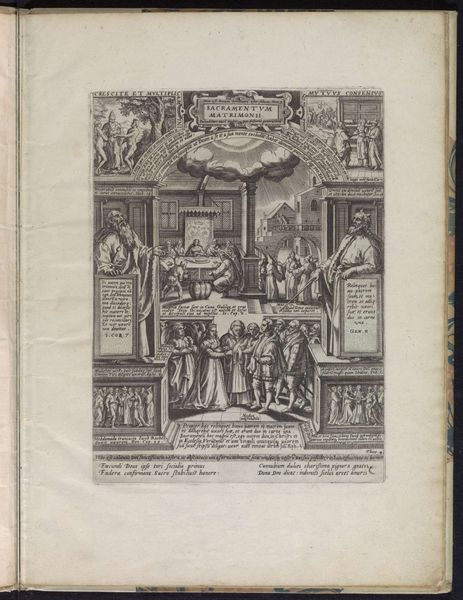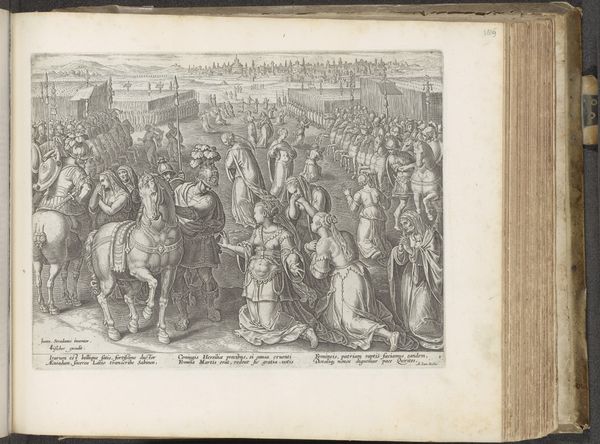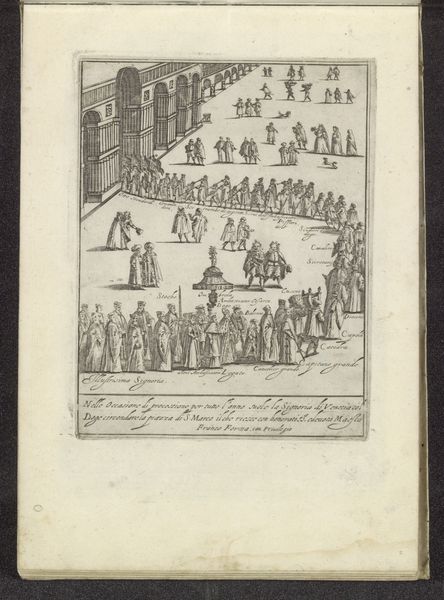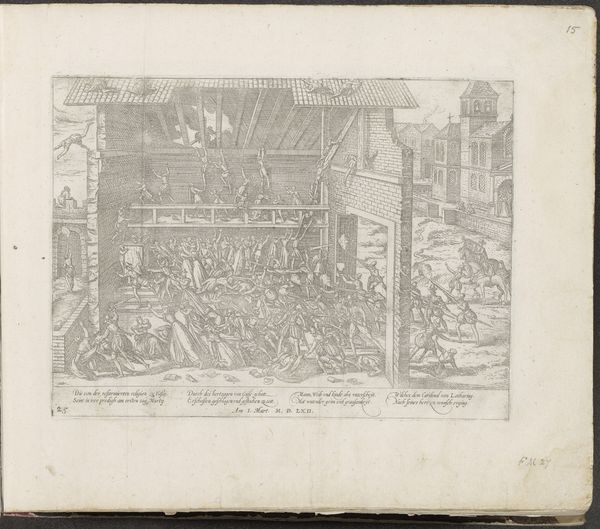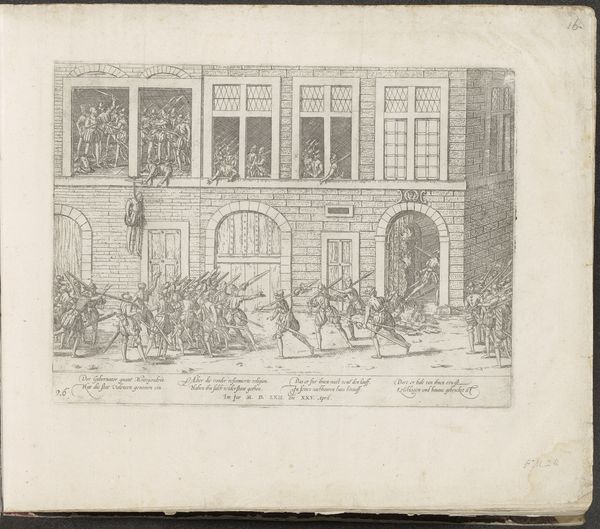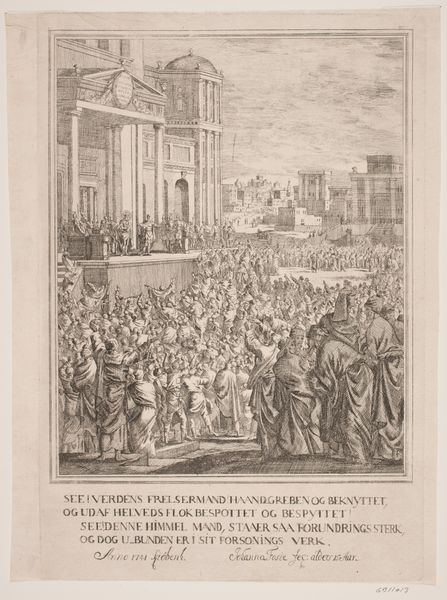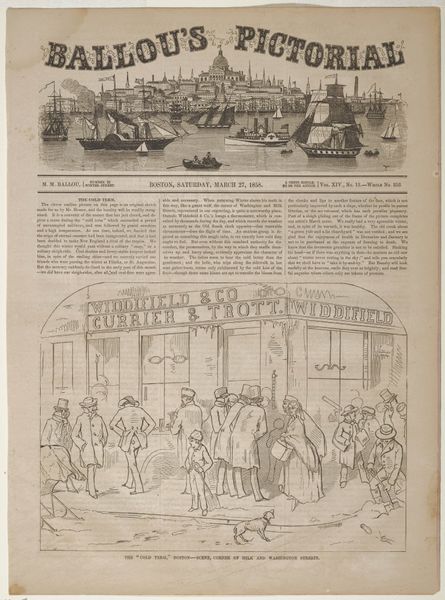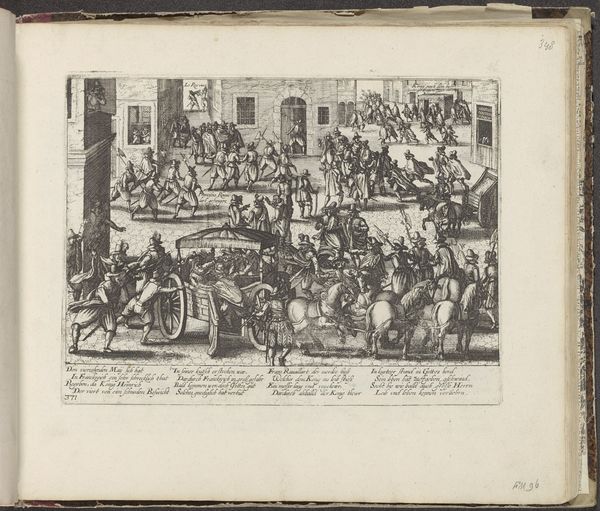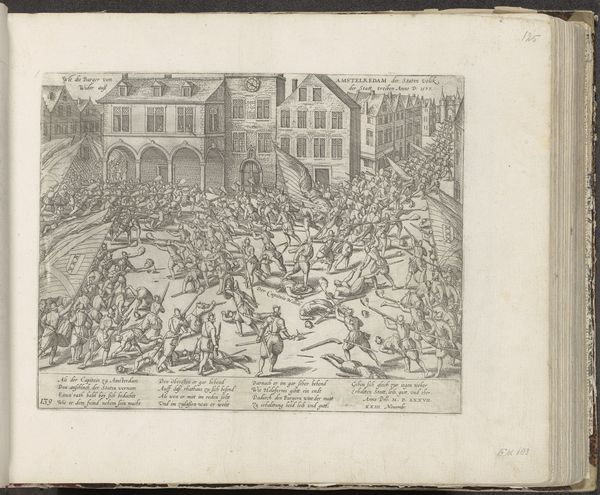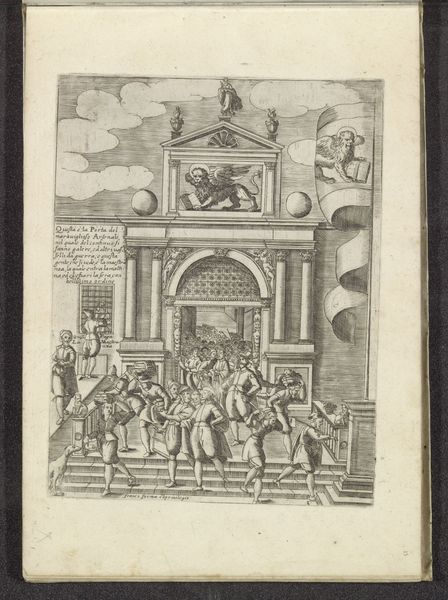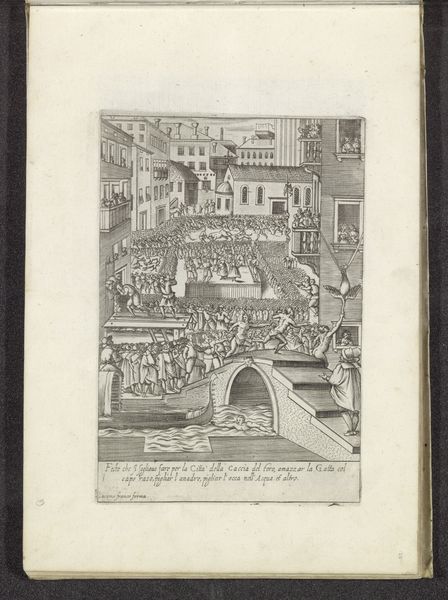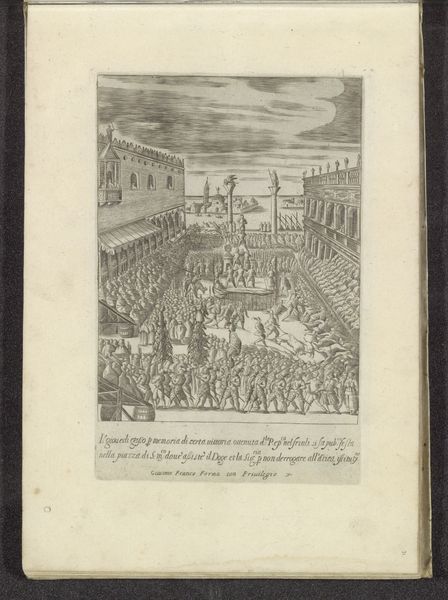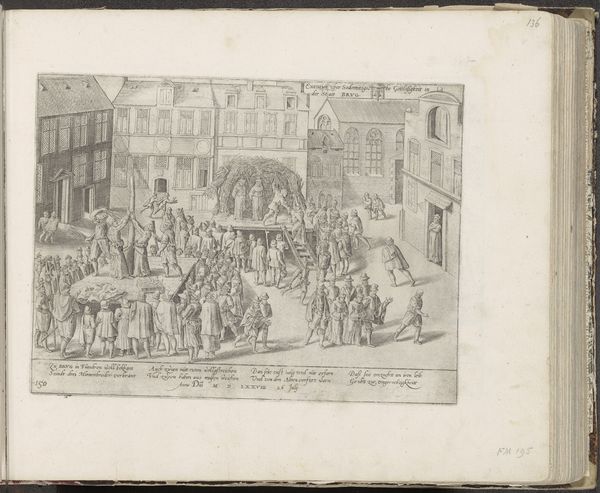
Doge en Serenissima Signoria voor de kerk van San Giorgio Maggiore te Venetië 1610
0:00
0:00
drawing, ink, engraving
#
drawing
#
venetian-painting
#
baroque
#
pen drawing
#
landscape
#
figuration
#
ink
#
line
#
cityscape
#
engraving
Dimensions: height 274 mm, width 191 mm
Copyright: Rijks Museum: Open Domain
Editor: This is a fascinating drawing housed at the Rijksmuseum. It's called "Doge en Serenissima Signoria voor de kerk van San Giorgio Maggiore te Venetië" which I believe translates to "Doge and the Most Serene Signoria Before the Church of San Giorgio Maggiore in Venice." It’s from 1610, by an anonymous artist, and rendered in pen and ink. It looks like a bustling Venetian scene with so much detail! How do you interpret this work? Curator: Formally, observe how the anonymous artist used line to construct spatial recession. The precision in the architectural rendering of San Giorgio Maggiore, balanced by the active figuration in the foreground, showcases a tension between structure and movement. Consider how the linear hatching defines tonal variation. Does the engraving medium contribute to the overall sense of detail and dynamism? Editor: I notice how the linear details create a sense of depth. Are the boats and figures as important as the church's structure? Curator: Precisely! Each element contributes to the overall formal balance. Analyze how the artist juxtaposes the static architecture with the lively, almost chaotic, arrangement of the figures and boats. Is it the artist's intention to prioritize one element over another, or to create an equilibrium between the built environment and human activity? Editor: It does seem balanced, in a way. The detailed line work unites everything, but is this typical of the era? Curator: Baroque aesthetics often employ intricate detail, but here, examine how the artist orchestrates line, shape and form. Could it be seen as a study of visual contrast? Or is it a commentary on social structure? The composition almost mimics that of a stage, with the Church serving as a theatrical backdrop to the pomp. Editor: That’s a great insight, I never looked at it that way. Thanks! Curator: Likewise! The artwork's value can be found in its structural presentation as a work that can be analyzed using a detailed semiotic eye, so I am delighted that our work here provides you the means to study independently.
Comments
No comments
Be the first to comment and join the conversation on the ultimate creative platform.
